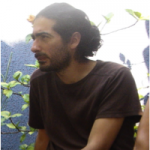Lien vers Pubmed [PMID] – 30738760
Lien DOI – 10.1016/j.plrev.2019.01.012S1571-0645(19)30020-X
Phys Life Rev 2019 Dec; 31(): 233-239
During the short period of brain development, nature is able to build the only system we know capable of producing cognition, language, creativity, and consciousness. The neocortex – the outermost layer of the mammalian cerebrum – appears to be the biological substrate of these abilities. Its development requires not only the precise placement and wiring of billions of cells, but also the implementation of mechanisms to ensure a viable cognition despite sometimes dramatic perturbations. Today, this remarkably complex organisation is thought to be genetically encoded, and further refined by activity-dependent processes. We propose that mechanical morphogenesis – the capacity of homogeneously growing elastic tissue to produce complex shapes – can also play an important role. Out of homogeneous growth, mechanical morphogenesis can induce the segregation of the neocortex into mechanical and geometric modules – the neocortical folds. Through the feedback of physical forces on developing tissue, these modules can influence the differentiation and wiring of the neocortex, having a causal role on neocortical development, and providing adaptable and robust units for its evolution.



